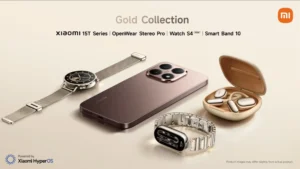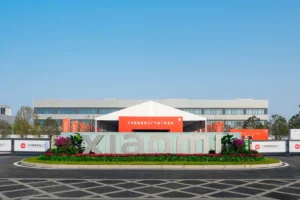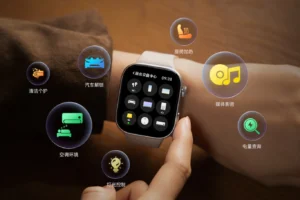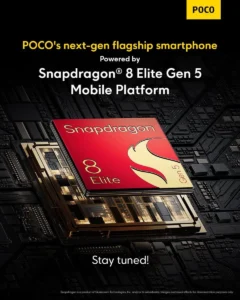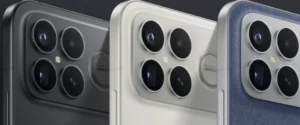Xiaomi 15 Ultra vs. Oppo Find X8 Ultra: Which Ultra Flagship Reigns Supreme?
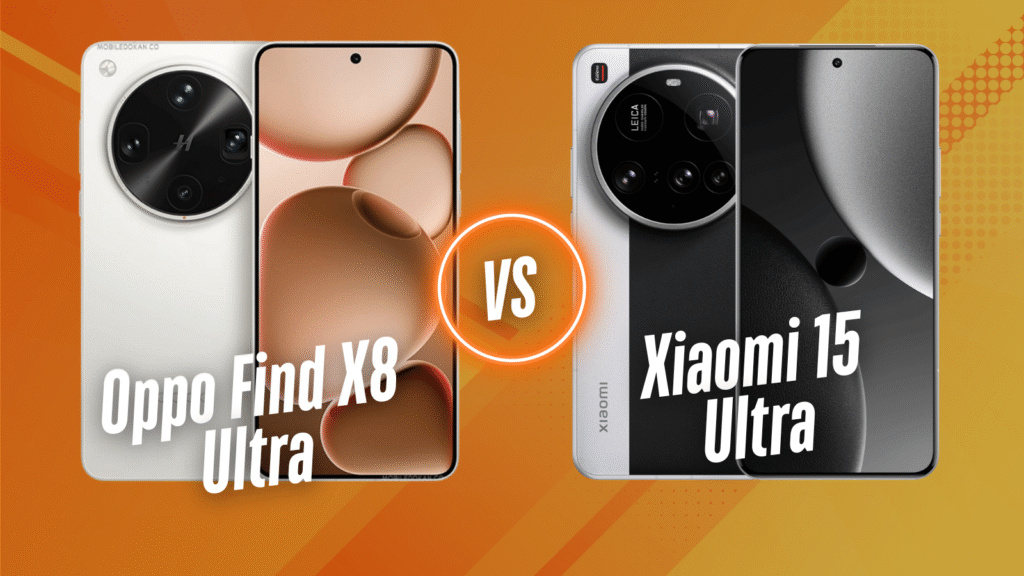
In the ever-evolving smartphone landscape of 2025, the Xiaomi 15 Ultra and Oppo Find X8 Ultra stand out as two of the most sophisticated Android devices. Targeted at premium users who demand excellence in photography, performance, and design, both smartphones bring unique innovations to the table. While Xiaomi emphasizes cutting-edge photographic technology and a comprehensive ecosystem, Oppo focuses on versatility and value. In this detailed comparison, we will explore their differences to help you determine which flagship best suits your technological preferences.

Design and Build Quality: Aesthetic vs. Durability
The Xiaomi 15 Ultra showcases a blend of premium materials, including eco-leather and aerospace-grade fiberglass, resulting in a unique texture that enhances grip—especially appealing for photography enthusiasts. Measuring 9.4 mm thick and weighing 226 g, its prominent camera module can affect ergonomics during extended use. With an IP68 rating, it offers dust and water resistance (up to 1.5 m for 30 minutes) and is protected by Shield Glass 2.0. Available in various colors, including black, white, green, and a special silver edition inspired by Leica, it certainly makes a statement.
Conversely, the Oppo Find X8 Ultra opts for a minimalist aesthetic with a matte finish on the back and curved screen edges, lending it an elegant look. At 8.8 mm thick and also weighing 226 g, it is slimmer, and its less pronounced camera module improves comfort. Its IP68/IP69 rating allows it to withstand not only water immersion but also high-pressure jets. Featuring Gorilla Glass Victus 2 for additional protection, it is offered in pure white, matte black, and shell pink.
Verdict on Design
Xiaomi’s design emphasizes a tactile, robust experience ideal for photography, while Oppo excels in slimness, durability, and elegance.
Display: Clarity vs. Brightness
The Xiaomi 15 Ultra boasts a 6.73-inch LTPO AMOLED display with a resolution of 1440 x 3200 pixels, providing a higher pixel density for sharper images. With a peak brightness of 3200 nits, it ensures excellent visibility even in bright sunlight. Additionally, it supports Dolby Vision and HDR10+ for vibrant colors and high contrast. The dynamic refresh rate ranges from 1 to 120 Hz, optimizing both fluidity and energy consumption.
In comparison, the Oppo Find X8 Ultra features a slightly larger 6.8-inch LTPO AMOLED screen with a resolution of 1440 x 3168 pixels, making it marginally less sharp than its competitor. Its maximum brightness of 2300 nits may affect outdoor visibility. However, it incorporates 2160 Hz PWM dimming to minimize eye strain, along with customizable color temperature and a refresh rate of 1-120 Hz.
Verdict on Display
Xiaomi leads with a sharper, brighter screen, making it ideal for multimedia and outdoor use, while Oppo offers enhanced visual comfort.
Performance: Balanced Power
Both smartphones are powered by the Qualcomm Snapdragon 8 Elite chip, a 3 nm processor that delivers exceptional performance, surpassing both the Snapdragon 8 Gen 3 and Apple’s A18 Pro. The Xiaomi 15 Ultra pairs this processor with up to 16 GB of RAM and 1 TB of UFS 4.1 storage, ensuring speed for resource-intensive tasks like video editing and gaming. It runs HyperOS 2 based on Android 15, promising four years of major updates and a seamless experience within the Xiaomi ecosystem.
On the other hand, the Oppo Find X8 Ultra also offers up to 16 GB of RAM and 1 TB of storage, but uses UFS 4.0, which is slightly slower than Xiaomi’s UFS 4.1. It operates on ColorOS 15 over Android 15, providing five years of updates, making it a more sustainable choice for long-term software support. While its performance is comparable for daily tasks, it may heat up more during extreme use.
Verdict on Performance
Xiaomi has a slight edge in storage speed, but Oppo provides longer software support.
Camera Systems: Innovation vs. Versatility
The Xiaomi 15 Ultra is a photography powerhouse, featuring a Leica-optimized quad-camera system. Its main sensor is a 50 MP (1-inch, f/1.6, OIS) that excels in low-light conditions, accompanied by a 200 MP periscope telephoto lens with 4.3x optical zoom, a 50 MP telephoto lens (3x zoom), and a 50 MP ultra-wide lens (115°). It supports 8K video recording with advanced stabilization and offers optional accessories like a 67 mm filter ring for professional photography.
In contrast, the Oppo Find X8 Ultra, fine-tuned by Hasselblad, also features a quad-camera setup: a 50 MP (1-inch, f/1.8, OIS) main sensor, a 50 MP ultra-wide lens, and two periscope telephoto lenses (50 MP with 3x and 6x optical zoom). This setup provides greater versatility for zoom photography. It records 4K video at 60 fps with advanced stabilization and AI features to eliminate reflections. Although its aperture is narrower, its zoom range is superior.
Verdict on Cameras
Xiaomi excels in creative photography and professional video with its 200 MP lens and 8K recording, while Oppo provides greater flexibility in zoom for versatile photography.
Battery and Charging: Capacity vs. Speed
The Xiaomi 15 Ultra features a 5410 mAh battery (6000 mAh in China) with impressive fast charging capabilities of 90W wired and 80W wireless. It also supports 10W reverse charging. While its battery life is robust, the rapid charging ensures a full charge in under 40 minutes.
On the other hand, the Oppo Find X8 Ultra has a larger 6100 mAh battery, offering extended battery life, making it ideal for heavy users. It supports 100W wired charging (0-100% in just 35 minutes) and 50W wireless charging, along with reverse charging. Its larger capacity ensures it lasts longer during intensive use.
Verdict on Battery
Oppo wins in capacity and longevity, while Xiaomi leads in wireless charging speed, perfect for those who require quick top-ups.
Connectivity and Additional Features
The Xiaomi 15 Ultra is equipped with Wi-Fi 7, Bluetooth 6.0, 5G, NFC, an IR emitter, and bidirectional satellite communication. Its USB 3.2 port provides faster data transfer compared to Oppo’s USB 2.0.
The Oppo Find X8 Ultra also features Wi-Fi 7, Bluetooth 5.4, 5G, NFC, and enhanced satellite communication in its 1 TB variant. It includes an IR emitter and eSIM functionality but lacks some of the advanced connectivity options found in Xiaomi.
Verdict on Connectivity
Xiaomi takes the lead with more modern technologies like Wi-Fi 7 and Bluetooth 6.0.
Price and Value Comparison
The Xiaomi 15 Ultra is priced around $1500, reflecting its premium features such as the 200 MP lens and rapid wireless charging. This device is perfect for creators and advanced users willing to invest in professional tools.
In contrast, the Oppo Find X8 Ultra is priced at approximately $1000, offering exceptional value with its larger battery, extended software support, and versatile photography capabilities. It appeals to users looking for a balanced flagship without overspending.
Verdict on Price
Oppo provides a better price-to-value ratio, while Xiaomi justifies its higher cost with advanced features aimed at professionals.
Conclusion: Which One Should You Choose?
The Xiaomi 15 Ultra is the ideal choice for creators and advanced users prioritizing professional photography, featuring a 200 MP telephoto lens, 8K recording, and 80W wireless charging. Its sharper display, modern connectivity, and deep ecosystem make it perfect for tech enthusiasts.
Conversely, the Oppo Find X8 Ultra is the best option for users seeking a well-rounded flagship at a more accessible price. Its larger battery, longer software support, and zoom versatility make it suitable for everyday intensive use and diverse photography.
Overall Winner
If you prioritize photographic innovation and are willing to invest more, the Xiaomi 15 Ultra is your go-to. If you prefer value, durability, and battery life, then the Oppo Find X8 Ultra is your champion.
Comparative table: Xiaomi 15 Ultra vs Oppo Find X8 Ultra
Here’s a comparative table in English for the Xiaomi 15 Ultra vs Oppo Find X8 Ultra based on the article:
| Feature | Xiaomi 15 Ultra | Oppo Find X8 Ultra |
|---|---|---|
| Design & Build | Leather-like finish, aerospace-grade fiberglass, 9.4 mm thick, 226 g, IP68, Shield Glass 2.0 | Matte finish, curved edges, 8.8 mm thick, 226 g, IP68/IP69, Gorilla Glass Victus 2 |
| Display | 6.73″ LTPO AMOLED, 1440 x 3200 px, 3200 nits, 1-120 Hz, Dolby Vision, HDR10+ | 6.8″ LTPO AMOLED, 1440 x 3168 px, 2300 nits, 1-120 Hz, 2160 Hz PWM dimming |
| Performance | Snapdragon 8 Elite, 16 GB RAM, 1 TB UFS 4.1, HyperOS 2 (Android 15), 4 years of updates | Snapdragon 8 Elite, 16 GB RAM, 1 TB UFS 4.0, ColorOS 15 (Android 15), 5 years of updates |
| Cameras | 50 MP main (1″, f/1.6, OIS), 200 MP periscope (4.3x), 50 MP tele (3x), 50 MP ultra-wide, 8K video, Leica-tuned | 50 MP main (1″, f/1.8, OIS), 50 MP ultra-wide, 50 MP tele (3x), 50 MP tele (6x), 4K 60 fps, Hasselblad-tuned |
| Battery & Charging | 5410 mAh (6000 mAh in China), 90W wired, 80W wireless, 10W reverse charging | 6100 mAh, 100W wired, 50W wireless, reverse charging |
| Connectivity | Wi-Fi 7, Bluetooth 6.0, 5G, NFC, IR blaster, two-way satellite, USB-C DisplayPort, USB 3.2 | Wi-Fi 7, Bluetooth 5.4, 5G, NFC, IR blaster, enhanced satellite (1 TB model), eSIM, USB 2.0 |
| Price | ~$1500 | ~$1000 |
| Best For | Professional photography, creators, advanced users | Everyday intensive use, value seekers, versatile photography |
This table summarizes the key differences to help users decide based on their priorities.
Xiaomi 15 Ultra vs Oppo Find X8 Ultra
Discover the Xiaomi 15 Ultra vs Oppo Find X8 Ultra comparison to find the flagship that suits your needs best.
xiaomi, oppo, flagship smartphones, smartphone comparison, Xiaomi 15 Ultra, Oppo Find X8 Ultra
